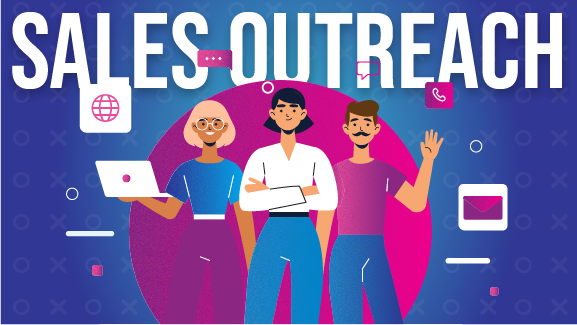
Wondering how to make your sales outreach better? Looking for sales outreach best practices that would help you reach more potential buyers and close more deals?
FACT: In a survey conducted by HubSpot, 59% of salespeople said when they figure out what works for them while doing sales outreach, they are unable to change it.
That’s because most of them aren’t aware of the sales outreach best practices to follow when optimizing their outreach efforts.
In this article, we will tell you why sales outreach is essential for your business and list 15 best practices you must follow when doing sales outreach.
Why Is Sales Outreach Important For Your Business?
Sales outreach is a powerful product promotion technique for every business, irrespective of its size.
It’s one of the two initial steps any business should take to spread brand awareness and win new business.
When you’re a brand new business, you want people to know that you exist.
No matter how great your product is, if your target audience has no idea you exist, you won’t get any sales.
But is outreach only good for brand awareness? No.
You can also leverage it to sell your product or service. The best way to sell a product via sales outreach is by:
- Knowing your target audience
- Start generating leads
- Cold emailing the leads and explaining to them about your product
- Booking a call with your leads
- Converting leads into customers
Doing sales outreach manually might take you hours, but with a sales outreach tool, it’s a 15 minutes process.
Having the right tool is one thing, but doing sales outreach with the tool is another.
There are several best practices you need to keep in mind when doing sales outreach. Let’s see what those are.
15 Sales Outreach Best Practices to Follow
Every sales outreach process has 3 parts to it:
- Pre: Things to do before starting your outreach campaign
- During: Things to do when doing sales outreach
- Post: Things to do after you’re done with outreach
For a flawless sales outreach process, you have to follow the best practices before, after, and during your outreach.
Let us tell you how it’s done.
Pre-Outreach Best Practices

#1. Know your target audience
In simple terms, the target audience is a bunch of people interested in buying your product.
For example, if you’re selling a sales outreach tool, your target audience will be salespeople, sales VP, or sales decision-makers.
Knowing your target audience is the first step of any sales outreach process, as it tells you who might be your potential customers.
Starting to sell without knowing your target audience is like shooting arrows in the dark.
Here are some methods you can use to know your target audience:
- Start and grow a blog, see who reads it, and use Google Analytics to know your target audience
- Conduct market research and surveys
- Analyze the target audience of your competitors
- Use the method of elimination – determine who your target audience isn’t
By following this best practice, you’d be able to maximize your ROI.
Note: Never stop refining your target audience, keep testing and keep growing your audience.
#2. Create a buyer persona
A buyer persona is an ideal customer profile, in other words, it’s the description of a person who would buy your product.
This is a fictional persona created based on data and research that helps you identify qualified leads.
Here are some pointers on how to create a buyer persona:
- Do thorough audience research based on age, location, language, and other essential parameters
- Identify customer goals and pain points
- Research how your product can help solve their pain points
The buyer persona you see below is for a SaaS-based company trying to sell a sales outreach tool.
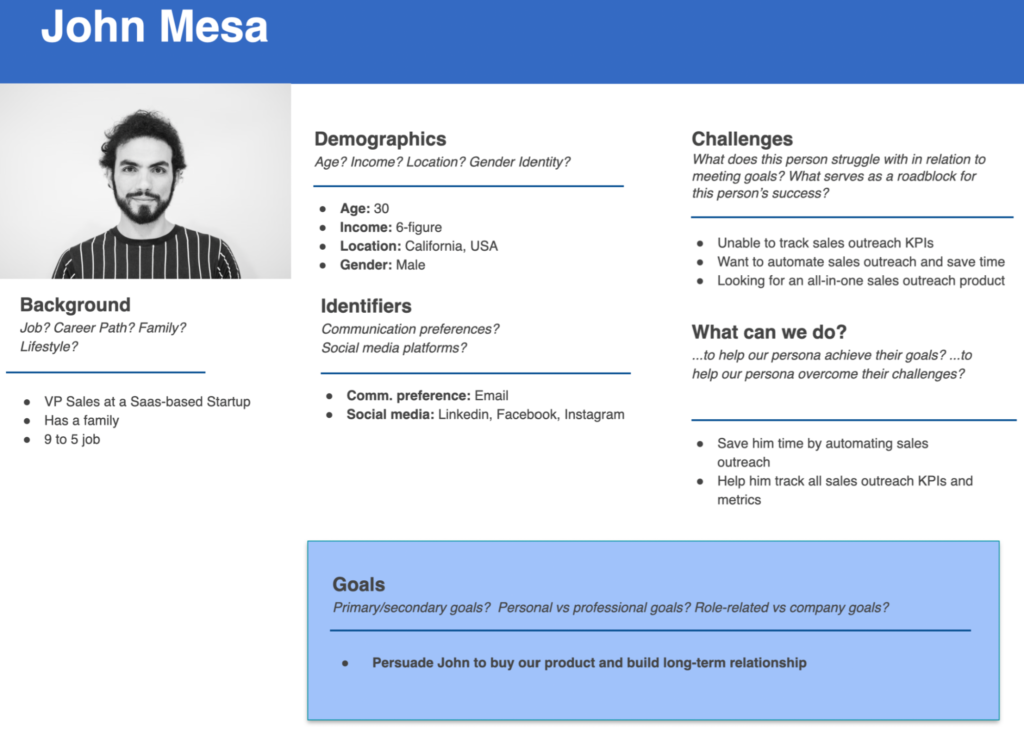
We’d suggest you spend some time researching and creating a buyer persona, as this can be the game changer in your sales outreach strategy.
#3. Select an outreach channel
Sales outreach channels are the sources of communication you’d use to reach out to your target audience. There are several outreach channels, but here are the three major ones:
- Phone Call
- Social media
You want to select an outreach channel where your target audience is active. And this could be different for a different set of target audiences.
Some of your target audience might be highly active on social media, but others might prefer you email them. So keep an open mind about having multiple outreach channels.
When choosing an outreach platform, all you have to remember is to meet your prospects on their turf.
Don’t ask them to switch channels; if you want to sell a product, make things easy for your prospects.
During Outreach

#4. Personalize your messaging
Did you know that 80% of customers are more likely to purchase if you offer them a personalized experience?
To make a sale, you first have to win your customers’ trust and to do so, you have to make them feel like you understand them.
You can start personalization via segmenting your audience into groups depending on demographics, interests, behaviors, pages they visit, etc.
Next, there is the matter of personalizing your cold email messaging.
You should talk to them by their first name – in case you’re planning cold emailing your prospects, greet them properly. Ex: Hey [first name] or Hi [first name].
Note: Don’t use their name too frequently in your copy, this will make them feel quite uncomfortable.
When speaking about your product, know the prospect’s pain points and tell them how your product could solve them.
Just a list of generalized features wouldn’t impress a prospect. Features should be tailored according to the prospect’s pain points.
Here’s a comparison between a general and a personalized email.
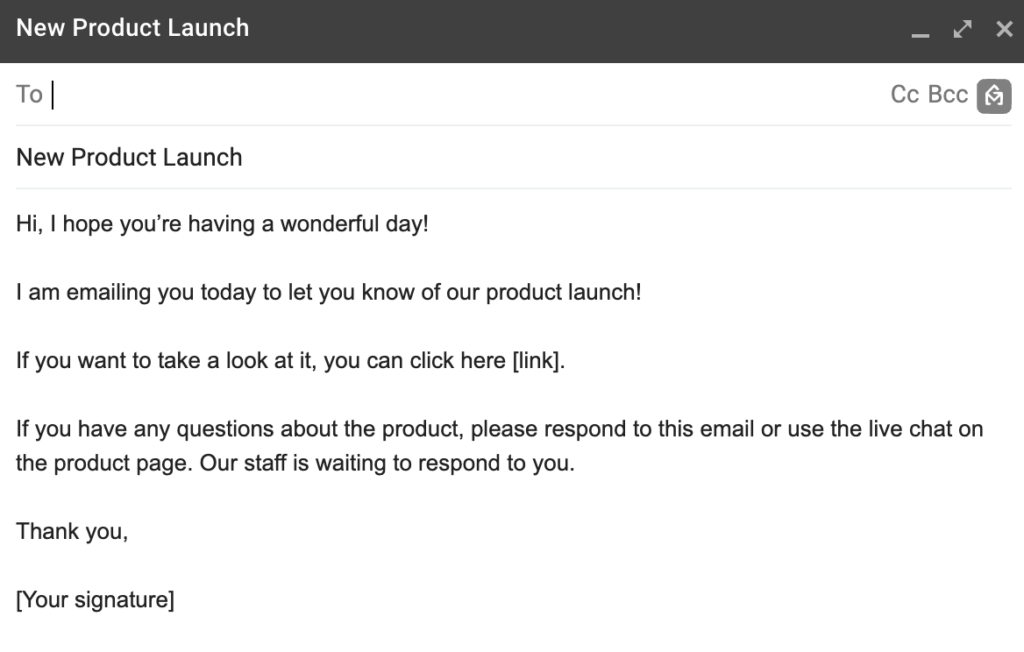
The above email sounds robotic, and one can see there’s not much effort put into writing it.
Do you think a prospect would be interested in checking this product out without knowing how it solved their problem?
Let’s just give it a touch of personalization:
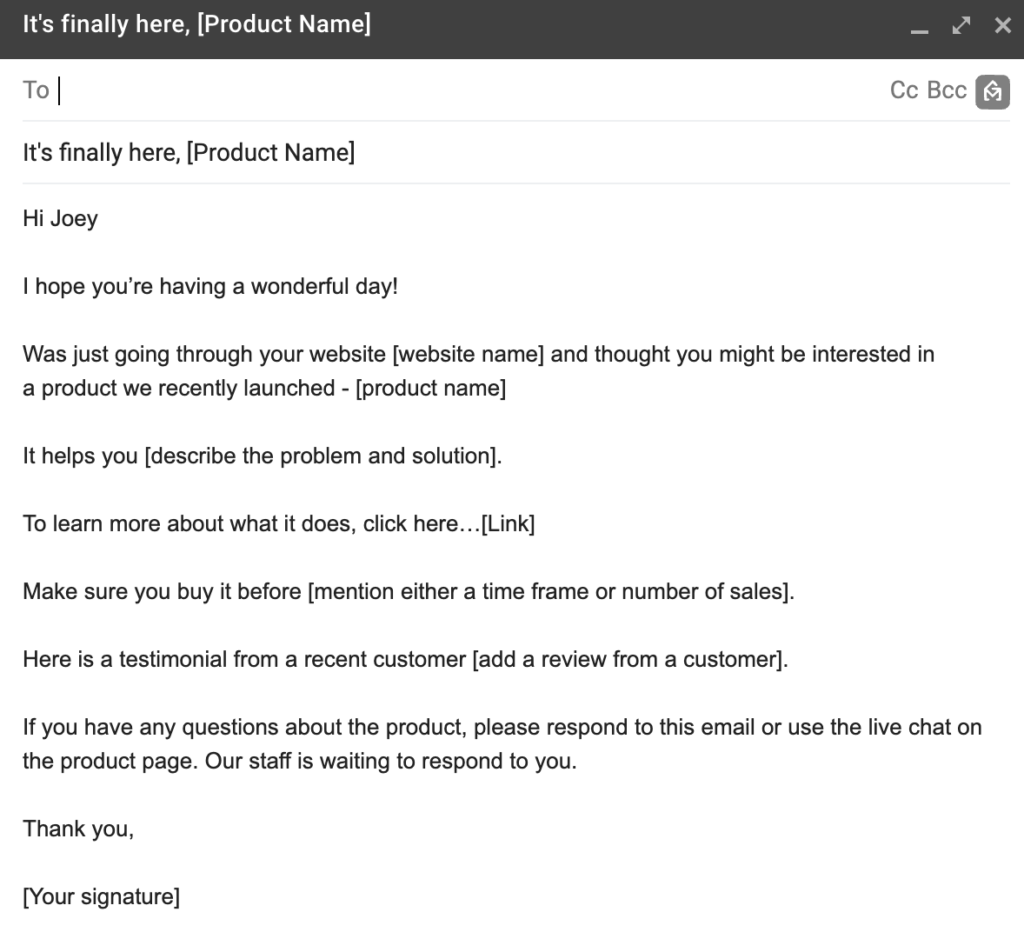
So which email do you think would get a reply?
One other thing you should be aware of is the call/message timing.
The best time to cold call a prospect is 9 am to 4 pm, and the best time to cold email a prospect is – in the early morning (6-7 am) or evening (around 8 pm).
#5. Write a flawless subject line and email copy
If you choose to email to be your sales channel, the next few best practices might help you engage with your prospects.
Your email copy is the most important part of your sales process. If you want to persuade prospects to at least test your product out, you have to convince them first.
Let’s discuss some tips you can use to write a flawless email copy.
Subject line
47% of your recipients will open emails based on how catchy your subject line is. So the first step in any email campaign is to write a subject line that’s irresistible to your prospect’s eyes.
Here are some best practices when writing email subject lines:
- Add personalization: Use merge tags to personalize your email subject line based on name, prospect’s website, or location
- Keep it short: Don’t use more than 9 words or 60 characters for an email subject line
- Punctuations: Don’t use more than 3 punctuation marks in your subject line
Don’t use jargon
Using multiple jargon in your email copy will just annoy your prospects.
Don’t write an email to show that you’re an expert in the niche. Skip industry jargon, and use plain simple English – the one that a layman could understand.
Keep your copy crisp and short
When doing email outreach, keeping your email copy short will lead to a better response rate.
It’s sometimes tough to cover everything in 100 words, but as a sales rep, you should know how to write a crisp sales copy.
The ideal length of your email copy should be between 50 to 125 words, as this gives you the best repose rate (just above 50%).
Pro Tip: Having a CTA at the end (or in some cases in the middle) in an email copy is a must. You want your prospects to take some action after reading your email. But never have multiple CTAs in a single email copy, as this would confuse your prospects.
#6. Schedule follow-ups
Follow-ups are important to increase your email campaign response rates. About 60% of customers say NO four times before saying Yes. This is the reason why your follow-ups matter more than your first emails.
When sending a follow-up email, you need a strategy. Start with identifying the objective of the emails. After your first conversation with a prospect on a call or email, there might be several reasons for you to follow them up, such as:
- Asking for some specific information
- Meeting them in person request
- If you haven’t spoken to the prospect in a while, you might email them just to catch up
After knowing the context, you must ensure that your copy has some kind of reference to the previous conversation or email. This adds a touch of personalization and reminds the prospect about you.
You can have a follow-up sequence like the one below:
- Within 24-hours: Thank you email
- Within 48-hours: Ask their opinion
- Within 1-2 weeks: Request a call
- Every 3 months: Catch up
Here’s an example of a great follow up email:

#7. A/B test your campaigns
When we talk about A/B testing in sales outreach, it’s the process of sending out different email campaigns to different sets of your target audience and then analyzing every campaign’s performance.
The ultimate goal of A/B testing in a sales outreach is to see which email campaign performs the best and then scale it for optimal results.
A/B testing can be as simple as testing out your CTA or as complex as setting up a drip sequence variation.
A/B testing gives you an idea about which email copies perform the best, what subject lines increase email open rate, what’s the best CTA placement, and much more.
Post-Outreach

#8. Track all KPIs and metrics
Any sales outreach has two measurable elements – KPIs and Metrics.
Sales KPIs are the measurable values that show how your outreach campaigns are performing against the objectives set by you. Example – Number of new leads generated.
Sales metrics are categories of quantifiable data that lets you track the status of a specific process. Example – Number of page views.
Here are some of the most important KPIs and metrics to track for your outreach sales:
- Number of new leads: The number of unique leads your sales team generates each month
- Leads to meeting conversion: The number of prospects that you talked to about the product
- Meeting to pipeline conversion: The number of prospects you were able to convert into customers after the meeting
- Deal win rate: Total number of deals won divided by the total number of opportunities
- User adoption of the product: Number of new users divided by the total number of users
- Net promoter score: % of promoters – % of detractors
#9. Record all information in a CRM
Recording information about all your campaigns, tests, and prospect list in your CRM lets you pick up where you left off. It also helps you analyze every step you take when doing outreach sales.
The main purpose of storing information in a central location is to not waste time if you decide to hire someone or replace your outreach salesperson.
The newly hired person can log in and access all the data.
#10. Use sales tools to automate the process
Doing sales outreach manually was a common practice a decade ago, but now there are hundreds of outbound sales tools that help you fasten up the process.
TIP: Postaga (disclaimer – this is our tool) helps you automate everything from lead generation to booking meetings for finalizing the deal.
With Postaga, you can automate your cold email outreach, and connect with new customers using a simple process:
- Prospecting: The tool will first help you find the right websites, businesses, and contacts to reach out to.
- Email Sequence: Postaga will then help you build a highly personalized email sequence.
- Follow-Ups: Postaga will also automatically send email sequence follow-ups and stop once your prospects reply.
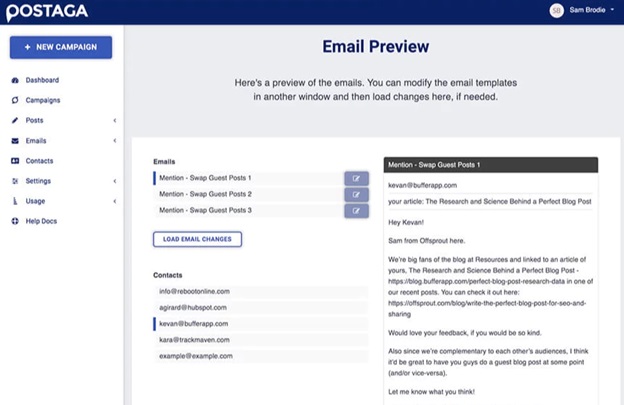
Learn more about Postaga here.
#11. Bring your sales and marketing teams together
Bringing your sales and marketing team together is a cornerstone of any sales outreach campaign.
Why?
That’s because these teams go hand in hand.
When running a sales outreach, marketers can review any email copy, social media posts, and call scripts and ensure that the copies are according to the brand voice.
What’s more, you can use the marketing team’s analytics to decide which channel is the best for your company’s sales outreach.
Miscellaneous
#12. Avoid unnecessary follow-ups
When a prospect isn’t interested, don’t bother them with unnecessary follow-ups. Not only will this annoy them, but you will be pouring hours of effort into it and get nothing out of it.
You need to know when a prospect can turn into a buyer and when they’re a lost cause.
One strong signal to know this is when you get a harsh or negative reply to a positive email.
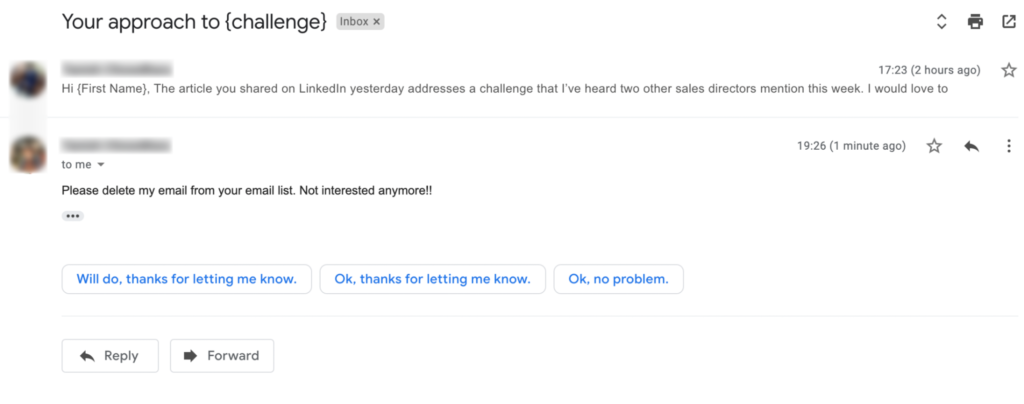
#13. Leverage out-of-office situations the right way
Getting an out-of-office email is common when you run email campaigns regularly. Don’t just leave these prospects.
When they return to their offices, do you think they’d find your email amongst hundreds of others?
The out-of-office email often has a number you can call on or their peer’s email address. Take action, send an email, or book a discovery call and close deals immediately.

#14. Explain to leads how your product solves their problem
Instead of just bragging about your product’s features, tell your leads how they solve the problems they face.
The best way to do this is by segmenting your target audience into multiple groups right at the start.
Make a list of pain points each group might face and explain how your tool is the best solution for their pain points.
When you talk more about your customer and their problems and not just your product, your conversion rates will be through the roof.
#15. Use testimonials to establish credibility
According to BigCommerce, 72% of consumers say a positive testimonial makes them trust a business more. So why not use it when doing outreach sales?
Telling your prospects about how one of your customers got rid of a problem using your product would help them bond with you.
After all, your prospects are human, they too have feelings. Once you build credibility via testimonials, converting your prospects into buyers becomes easy.
Conclusion
Sales outreach has become an integral part of any business to get sales and spread brand awareness.
Sure, you can get sales via inbound marketing, but if you want to spread brand awareness and reach out to your target audience quickly, sales outreach is the best technique to do so.
The best practices mentioned about clubbed with an all-in-one sales automation tool would help you reach out, book meetings, and get sales in no time.
Want to take your sales outreach to a whole new level? Check out Postaga, the no.1 automation tool for outbound sales.
Free 14-Day Trial
Start building relationships now with your fully-featured 14-day trial!
How We Compare
Terms | Done-For-You Terms | Privacy | Write For Us | Press
© 2025 Postaga. All Rights Reserved. Made with 
